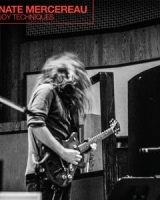In Conversation with Gary Lichtenstein
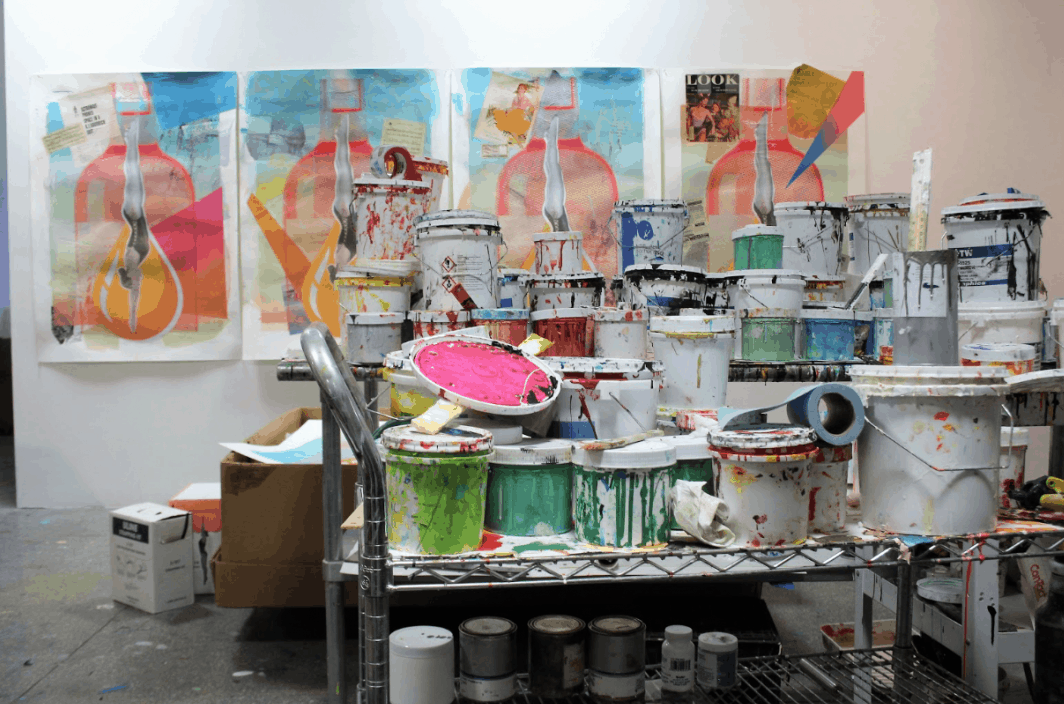
Art is a sign of the times. Items depicted reflect the objects which currently engulf us. Perhaps, however, we should examine not just the subject matters in art as a reflection of humanity, but the way art is made. This realization becomes evident when visiting Cey Adams and Gary Lichtenstein at Gary Lichtenstein Editions.
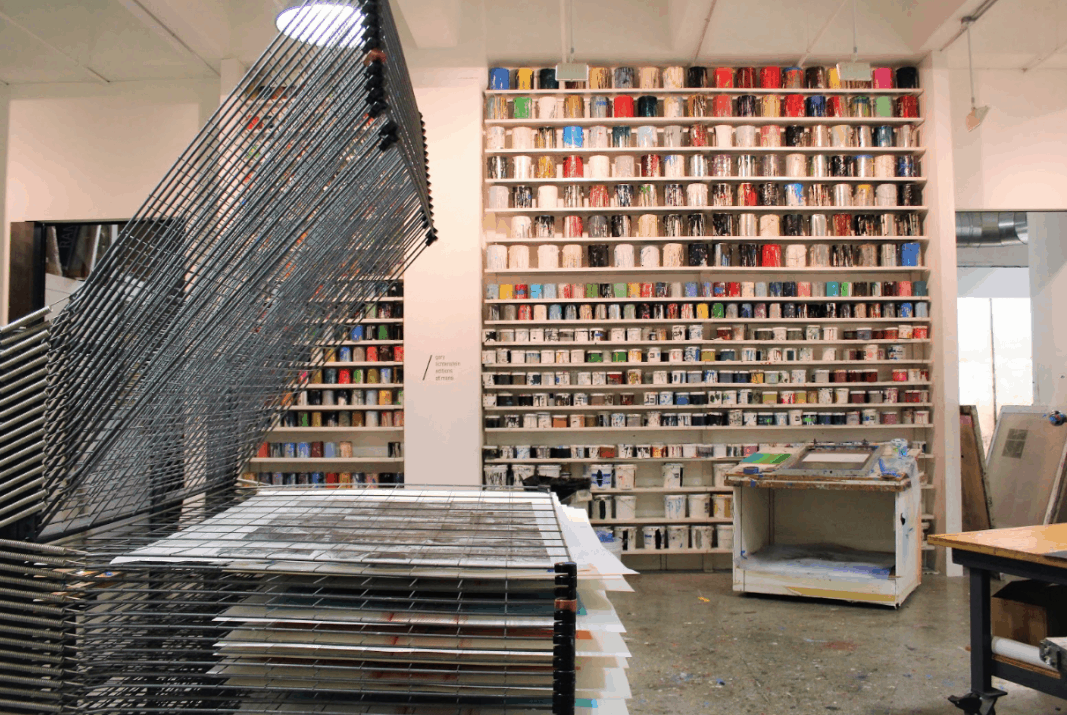
Gary Lichtenstein has been silkscreening for over 45 years. His studio, vast and overwhelming shows the dedication to his craft with industrial drying racks, walls of paint buckets and of course, silkscreens. Cey Adams, a collage artist, teamed up with Gary to create limited edition prints of his work, an ongoing collaboration that has been inspiring for both of them.
Gary and Cey make sense together. For one, they both focus heavily on process. As Cey told me, “Working with Gary, there are situations that don’t have to be explained, and that’s important. I’d rather talk about process than explain my subject matter.” For Cey, having to detail why you’re making the art you’re making is a waste of time. How you’re going to do it is where the breakthrough happens. As Gary put it, “Silkscreen is a match made in in heaven for certain kinds of artists. People who work with real color. We find ways to enhance it.”
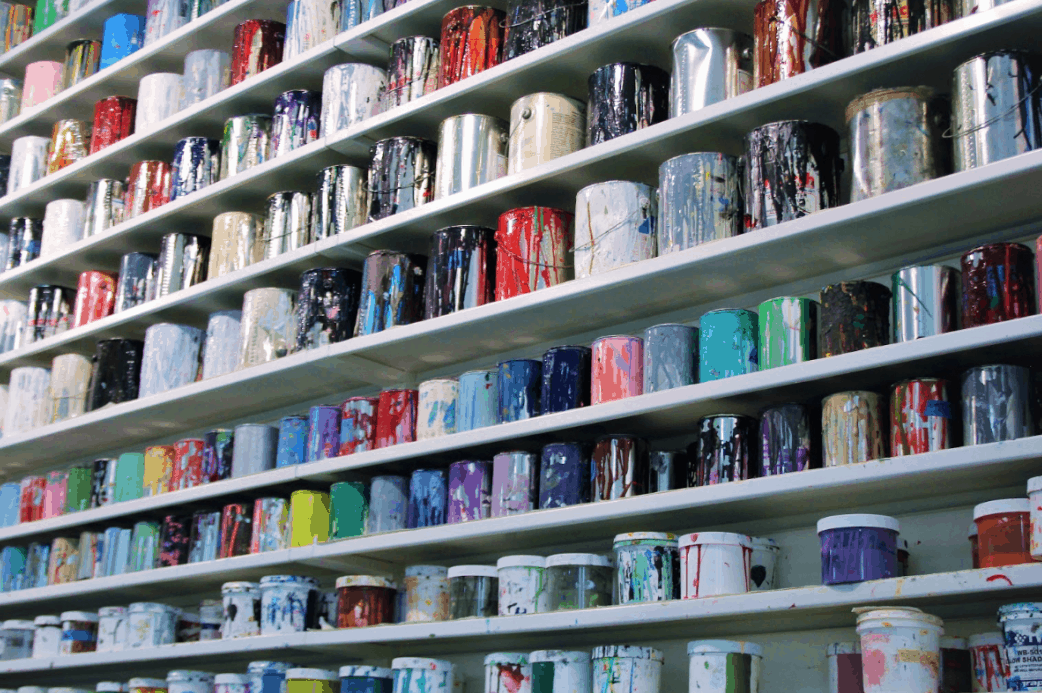
Gary goes on to discuss the history of printmaking. “Years ago, people saw things like STOP signs and then said, we can make art out of that. Most people today probably don’t even know that a STOP sign is silkscreen.”
I confess something. “To be honest, I didn’t–until just now.”
“See, there you go. But nowadays, it’s come full circle. You can make all kinds of images in digital art, but you can’t get silver any other way.”

Gary (left) and Cey (right) demonstrate the silkscreening process
As I listen to Gary talk, the process of the prints seems to straddle two worlds–a world of the past, where everything is real–real paper, real paint–one of a kind, and then the world of the future, where we can produce things quicker, more efficiently. It’s almost like the sweet spot of being a modern human being. You can take the vibrant, iconic work of Cey and match it with the silkscreening expertise of someone like Gary and purchase an original work of art. As Gary puts it, “Limited edition prints were the original way to reach into a market that couldn’t afford a painting. But these are still all unique pieces.”
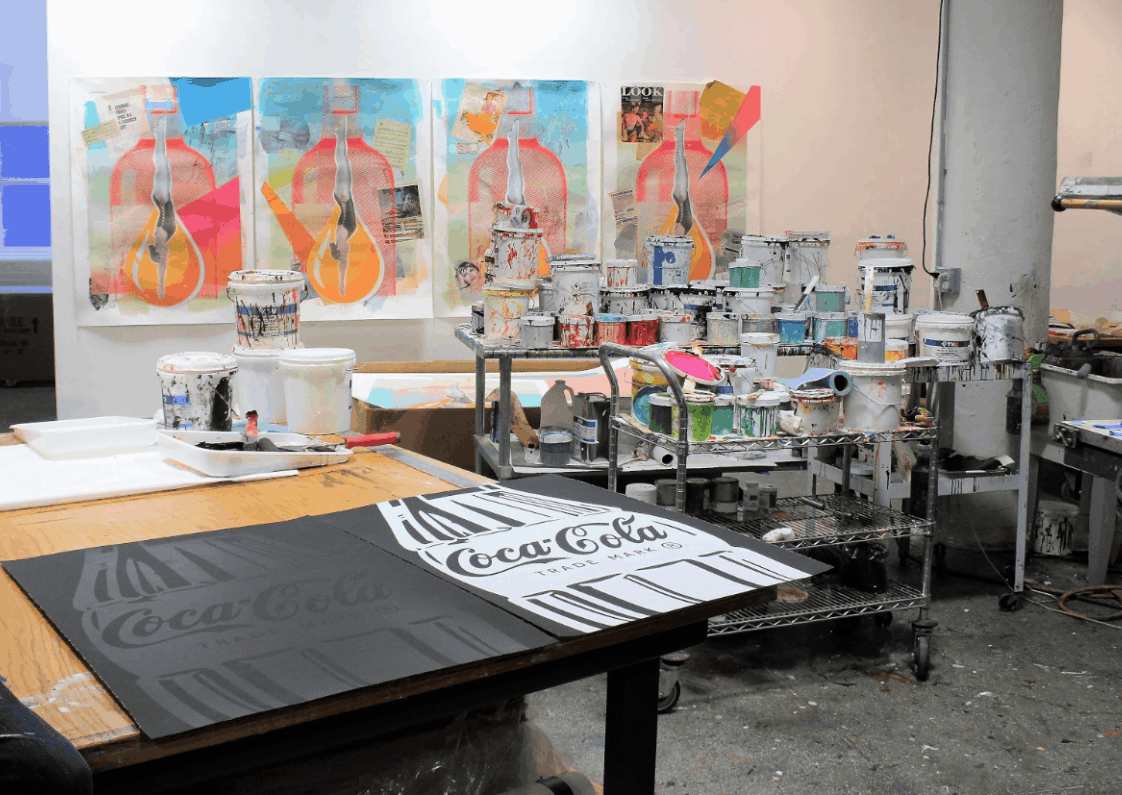
Gary and Cey pulled out a Coca Cola print that is done in both black and white, and black on black. “The layering of the screening really gives it depth,” I remarked, entranced by how physically luscious the image becomes when there’s the added dimension of the texture of paint. Taking the nostalgic, pop-art images and silkscreening them gives a body to these graphics we’re so used to see in a flattened dimension. It breathes life into icons that are impressed upon us over time.
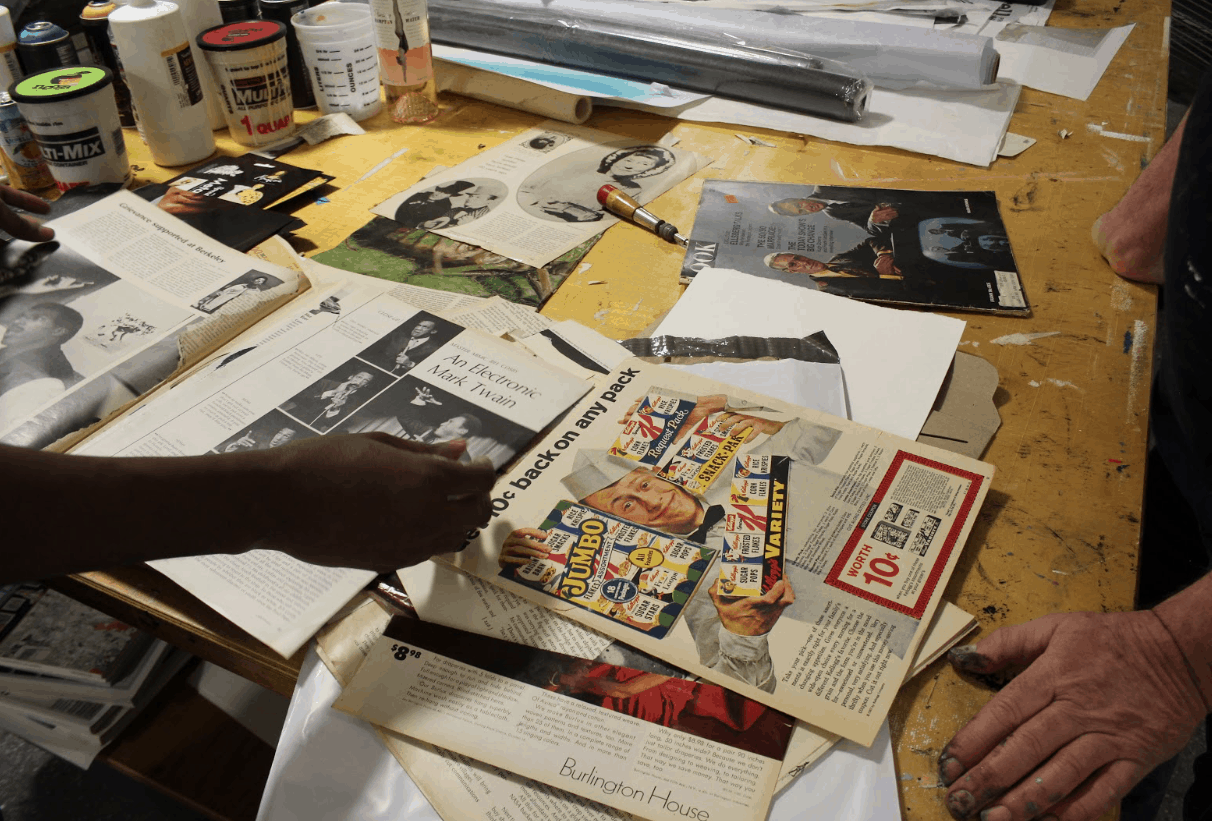
Gary goes to tell me that using these images in collage is like, “a history lesson just by making art.” He pulled out some magazines from the 60s he was cutting out of. “This is from June 1967 and you don’t need to explain it to people. They understand.”
Gary went on to elaborate. “You have a Bazooka collage, but buried in it are other things that come from the same time as Bazooka, all chewed up.”

Referencing a work of art by Cey which is an American flag collaboration of silkscreen and collage, Gary tells me, “There’s nothing you can’t put in the American flag that doesn’t stick.”. Cey also did the American flag mural for the opening ceremony for the National Museum of African American History and Culture, which eventually went into the permanent collection. It’s clearly a favorite graphic for him to work with, which he elaborated upon. “It can look familiar, but it takes work to make it look familiar. It’s designed to draw you in if you’re willing to go there.”
Gary Lichtenstein Editions is located in Mana Contemporary in Jersey City, New Jersey, which hosts 2 million square feet of art space. Once a quarter, all of the artists are able to open their studios to visitors. I asked what happens when the studio is open for visit. Does it help people who have been used to seeing art online connect with the work more? “Once one is exposed to silkscreen studio like this they understand the process.” Gary said. He tells me that children come in and he’ll point to their shirts which often will have silkscreen images on them. He’ll explain to them that that’s what he’s doing. They get it. “If you look at our art online versus in the gallery there’s a definite difference than if you come to the studio and see it being made. You’re another generation closer.”
I asked Gary if he feels the move towards digital has corrupted art at all, and he answered similarly as Anthony Haden-Guest did when I asked him the same question. “I originally I was frustrated but it’s not going to replace what i do. It’s its own thing.” He described when artists originally moved from oils to acrylics since they dried faster, it was a shift in the art world, but the people who begun making acrylic paintings were doing different kind of work because of the nature of the material. He reiterated, “It’s like that. You can’t get silver on a [computer] screen.”
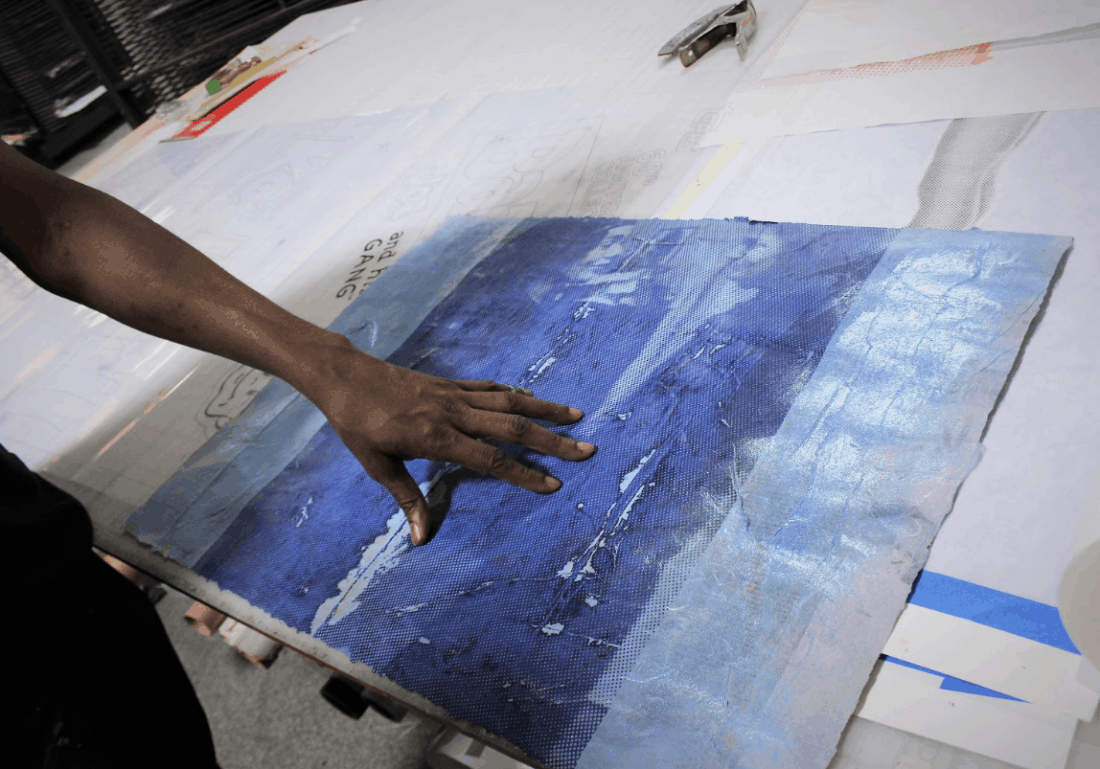
Next, Cey pulled out a silkscreen with an image of Coretta Scott King and Jackie Kennedy—two influential, American women whose husbands were shot and killed years apart. In the image, an accidental mark during the silkscreen process makes it look like there’s a tear. “In silkscreen there are mistakes that happen and you know you’ve seen that kind of mistake before, but you still can’t predict it,” Cey said. This mistake became symbolic of what these women went through in a certain place and time. While the image was originally meant to be part of the flag hanging on the wall, both Cey and Gary decided to keep it the way it was, as its own work. They gained something just from the act of silkscreening itself. Cey said, “Sometimes you need to know when to say when.

